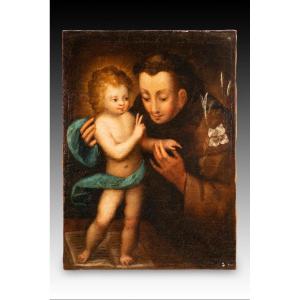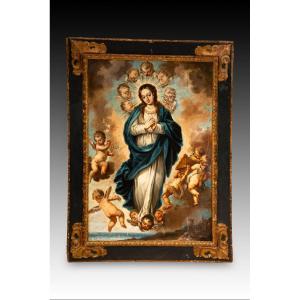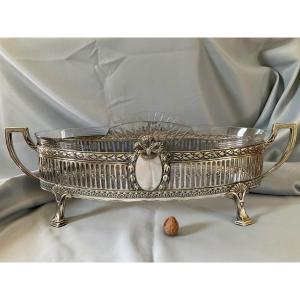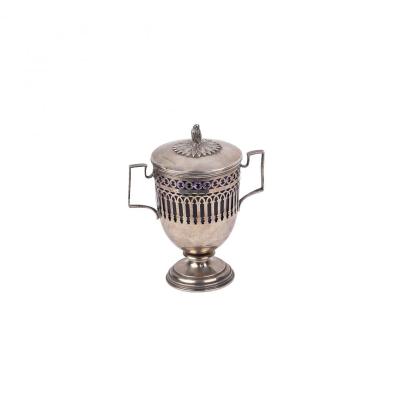With punch marks and engraving marks.
Circular silver platter, with a raised edge, decorated with a composition of plant elements and shields or flat mirrors between two lines of smooth mouldings. The seat, raised on two levels, has another plant decoration, with a smooth and domed centre. A completely smooth field has been arranged around the seat. The marks of the backrest are located on the piece. One is engraved on the seat, towards the centre of the piece. The other is on the edge or border, as is the only contrasting mark that has been found. The latter has been associated with Zaragoza, which places the piece in that city. Compare this piece, noting its differences, with the Tudela fountain from the second quarter of the 17th century made by Noval and preserved in the Lázaro Galdiano Foundation Museum in Madrid (Spain). Or the enamelled fountain in the National Archaeological Museum made by Rodrigo de Arenillas or Abaunza in Burgos. It is known that until the ordinances of 1742, it was not mandatory for the goldsmith's mark to appear on the pieces made by him in Zaragoza. After that date, pieces that only bore the city's mark continued to be abundant. At the end of the 17th century, chiseled work became very rare, with voluminous embossing with leaf motifs being common. Around 1720, the decoration became thicker and more exuberant, and around 1725, with the same ornamental motifs, the decorative meaning changed (contrasts were sought between abundantly decorated areas and others that were completely smooth and polished). The oldest example of Rococo goldwork in Zaragoza was dated 1742 (image of Santa Barbara from the church of San Pablo).
Weight: 2.4 kg. - Size: 55.5x55.5x4 cm


















































 Le Magazine de PROANTIC
Le Magazine de PROANTIC TRÉSORS Magazine
TRÉSORS Magazine Rivista Artiquariato
Rivista Artiquariato